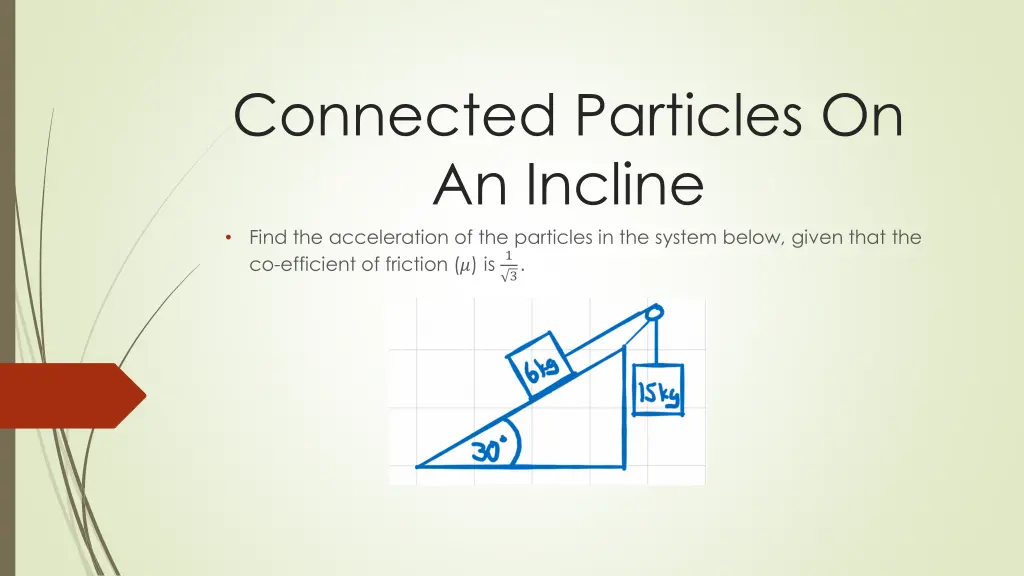
Calculating Acceleration of Connected Particles on an Incline with Friction
Learn how to find the acceleration of particles in a system on an incline with friction using force analysis and trigonometry. Consider the forces acting on each particle and calculate the acceleration based on the given coefficient of friction. Understand the components of forces parallel and perpendicular to the incline to determine the motion of the particles accurately.
Download Presentation

Please find below an Image/Link to download the presentation.
The content on the website is provided AS IS for your information and personal use only. It may not be sold, licensed, or shared on other websites without obtaining consent from the author. If you encounter any issues during the download, it is possible that the publisher has removed the file from their server.
You are allowed to download the files provided on this website for personal or commercial use, subject to the condition that they are used lawfully. All files are the property of their respective owners.
The content on the website is provided AS IS for your information and personal use only. It may not be sold, licensed, or shared on other websites without obtaining consent from the author.
E N D
Presentation Transcript
Connected Particles On An Incline Find the acceleration of the particles in the system below, given that the co-efficient of friction (?) is 1 3.
Consider the forces acting on each particle, starting with the 6kg: Before we proceed, we need to adjust/resolve the downward force of gravity to establish its components parallel and perpendicular to the plane.
Initially, this involves a little bit of geometry and trigonometry: In order to find the adjacent side we take the hypotenuse (6?) and multiply by the Cos of the angle of incline (30 ). In order to find the opposite side we take the hypotenuse (6?) and multiply by the Sin of the angle of incline (30 ). This gives a completed forces diagram of:
As there is no upward/downward movement, we know ? = 3 3?, and this allows us to calculate friction (? = ??): 1 ? = 3(3 3?) ? = 3? We can now consider the forces acting along the plane (parallel to the plane). Assuming the particle moves upwards: ? ? 3? = 6? ? 3? 3? = 6? ? 6? = 6? ? = 6? + 6? Note, it is not essential to have the correct direction of motion. If you decided the 6 kg particle would slide down the plane, assuming you apply the forces in the correct direction you would get an acceleration which has the same magnitude but a different sign to the one we will get here. This sign denotes a directional difference in the accelerations.
The forces acting on the 15 kg particle are: As we are assuming this will move downwards our equation is: 15? ? = 15? We can now substitute in the value of ? we got earlier to find the common acceleration of the particles:
15? 6? + 6? = 15? 15? 6? 6? = 15? 9? = 21? 3? 7?? 2= ?
